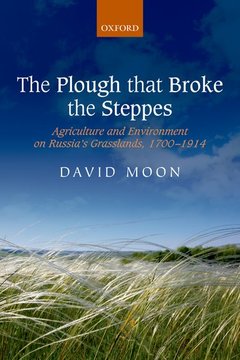The Plough that Broke the Steppes Agriculture and Environment on Russia's Grasslands, 1700-1914 Oxford Studies in Modern European History Series
Langue : Anglais
Auteur : Moon David

This is the first environmental history of Russia's steppes. From the early-eighteenth century, settlers moved to the semi-arid but fertile grasslands from wetter, forested regions in central and northern Russia and Ukraine, and from central Europe. By the late-nineteenth century, they had turned the steppes into the bread basket of the Russian Empire and parts of Europe. But there was another side to this story. The steppe region was hit by recurring droughts, winds from the east whipped up dust storms, the fertile black earth suffered severe erosion, crops failed, and in the worst years there was famine. David Moon analyses how naturalists and scientists came to understand the steppe environment, including the origins of the fertile black earth. He also analyses how scientists tried to understand environmental change, including climate change. Farmers, and the scientists who advised them, tried different ways to deal with the recurring droughts: planting trees, irrigation, and cultivating the soil. More sustainable, however, were techniques of cultivation to retain scarce moisture in the soil. Among the pioneers were Mennonite settlers. Such approaches aimed to work with the environment, rather than trying to change it by planting trees or supplying more water artificially. The story is similar to the Dust Bowl on the Great Plains of the USA, which share a similar environment and environmental history. David Moon places the story of the steppes in the wider context of the environmental history of European colonialism around the globe.
David Moon is a specialist on Russian history. In recent years his research has focused on environmental history in a transnational context. He combines conventional historical research in archives and libraries with field work in the environments he studies. He has spent much of his career teaching at universities in the north of England and Scotland. He also has extensive experience of both Russia and the USA. He studied for a year at Leningrad State University in what was then the Soviet Union, and makes regular visits to Russia and Ukraine, including the steppe region, for research and field work.
Date de parution : 10-2014
Ouvrage de 340 p.
15.7x23.5 cm
Thème de The Plough that Broke the Steppes :
© 2024 LAVOISIER S.A.S.


